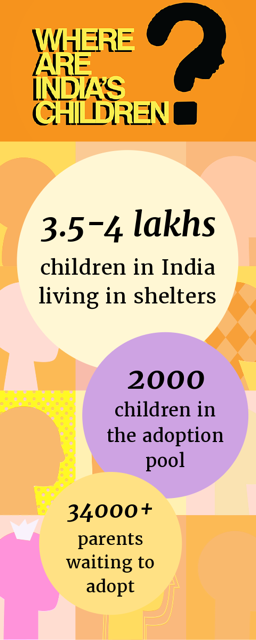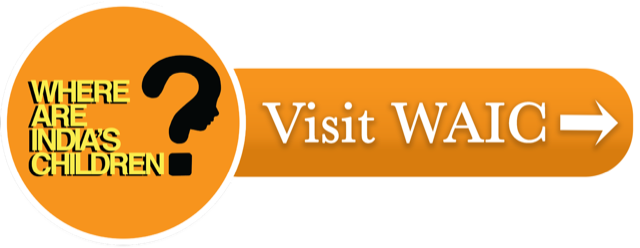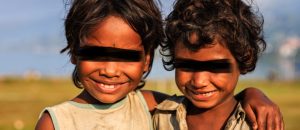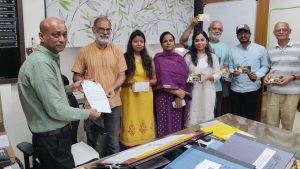India’s Adoption Paradox: Why thousands of eager families can’t find waiting children

Pune, 16th October 2023: Imagine being a child, abandoned for months or years on end, living in a shelter, not knowing if you will get the chance to have a family of your own. Unfortunately, this isn’t mere imagination for lakhs of children.
The reality of abandonment
As per recent data, an alarming 3.5 to 4 lakh(1) children in India are living in child shelters, formally known as Child Care Institutions (CCIs). While this number is significant, what’s even more startling is that out of these children, only 2,000(2) are part of the legal adoption pool. This disparity becomes even more poignant when you consider that there are over 34,000(2) parents eagerly waiting to adopt and provide a nurturing home to these children. To grasp the magnitude of this issue, imagine nearly the entire population of a city like Ahmednagar, filled with children, and yet only a minuscule fraction is available for adoption. Why is this the case? This series of articles, brought to you by Where Are India’s Children (WAIC), seeks to delve deeper into this pressing issue.

The plight behind closed doors
Within the walls of these shelters, children, despite the best efforts, often find themselves wrestling with their hopes and the haunting feeling of abandonment. They are at a heightened risk of abuse, malnutrition, and various medical and emotional issues. The love, warmth, and opportunities that a permanent family brings are beyond their reach. Adoptive parents understand firsthand the impact that living in an institutional setting for an extended stay has on children. Neha explains, “When we adopted our son at five years old, the scars of his years in a shelter were painfully evident. Abandoned at birth, he spent every single day of his life within the confines of institutional walls. While the shelter did their best, they had limited resources, so he was robbed of simple joys like playing in a playground or visiting a store. His young life, marred by bureaucratic delays and the pandemic, made him a shadow of what a child his age should be.”
And what of the 34,000+ prospective adoptive parents, registered and waiting eagerly to provide a loving home to a child? WAIC hears stories every day from prospective adoptive parents such as Pooja, “I’ve waited three years, my heart aching, yearning for a child’s laughter in our home. Knowing countless children are waiting for a family’s love, while my arms remain empty, is a pain beyond words. Why is love kept apart?”
The question then arises: Where Are India’s Children?
Where Are India’s Children (WAIC): Bridging the gap
Formed by three adoptive parents in 2019, WAIC, registered as Child Welfare and Action Foundation, is working tirelessly to bridge this gap. Says Smriti Gupta, Co-Founder: “We witnessed the abyss between the abandoned children and the awaiting families and decided to act.” Their vision is clear: “Ensure every eligible abandoned, orphaned, and surrendered child is made visible, and reaches the legal adoption pool.”
But what’s keeping these children from reaching the adoption pool? While the Juvenile Justice Act and Central Adoption Resource Authority (CARA) set a robust legal framework for the adoption of children, the ground reality paints a different picture. Many abandoned and orphaned children in shelters, who could be eligible for adoption, remain invisible and unevaluated due to a lack of resources, lack of law implementation and enforcement, ambiguities in the legalities of child abandonment, and the general public’s unawareness about the adoption rights of these children.
Take Prashant for example. In the heart of a bustling city, Prashant, a 6-year-old, was left to fend for himself. Fortune led him to the gates of a child shelter, where one might hope a child like him could expect a new beginning with one of the many thousands of parents who are willing to give a child a loving family. But as days turned to months, Prashant became just another face among the crowded shelter. The very hands meant to guide him to a loving home, never got around to evaluating his case for adoption eligibility. The absence of scrutiny or enforcement meant Prashant’s dreams of family meals and bedtime stories faded away. Instead, he was left to navigate the hard-knock world of institutional life, his potential and hopes dimming with each passing day.
Another example is young Ruchi, who sadly lost her parents. Seeking solace and protection, her aunt, overwhelmed by her own struggles, placed her in a shelter. Every evening, Ruchi would sit by the window, eyes scanning the road, hoping to catch a glimpse of her aunt returning for her. But no one ever came. And amidst the shelter’s paperwork, Ruchi’s file grew dustier each day. Her aunt imagined she would be cared for, but the very fact that she had an aunt somewhere out there became her tether and chain. The route to match her with a waiting family never arose since the shelter where she was staying was confused by which legal route to take. And so, Ruchi remained, her heart holding onto memories and dreams, while the possibilities of a loving home seemed to drift further away.
Ms. Manisha Biraris, Women and Child Development, Maharashtra, shares, “We know that there are less children in the adoption pool and more parents are in the waiting queue. The reason behind it is that many children are not coming into the legal adoption process. There is a lack of knowledge of legal surrender of a child, which leads to trafficking and illegal adoption. So we need to work on this and create awareness about safe surrender. Also, for eligible children in CCIs, we need to work on their cases faster so that they can be legally free and get matched with adoptive parents. For this, all stakeholders such as Specialised Adoption Agencies (SAA), Child Care Institutions (CCIs), State Adoption Resource Authority (SARA), and Central Adoption Resource (CARA) must get on the same page. Many CCIs and SAAs think no will adopt older children and are confused about who will do which part of the process. They may feel they will lose grants if they don’t keep enough children in their shelters. We need to clarify their doubts and build more awareness around older children’s adoption. Successful cases can be discussed with them so they will get more confidence.”
Meera Marthi, Co-Founder of Where Are India’s Children acknowledges that, despite huge challenges, the authorities wish to help the children, “We deeply appreciate the cooperation we’ve received from the authorities we work with on the ground, including the State and District Women and Child Development Departments, individual Child Welfare Committees, and child shelter staff. Their commitment is palpable, but it’s clear they’re battling against complexity, limited resources, and an overwhelming number of cases. Without the necessary broader systemic changes, even the most dedicated officers can only do so much. We’re striving to bridge these gaps, in a way which we believe is scalable and sustainable but it’s crucial to understand that many children’s futures are being inadvertently overlooked in the midst of these challenges.”
The change we are making
WAIC is tackling the issue within a three-pronged approach: Technology-enabled Groundwork, Advocacy, and Public Awareness. Its pioneering technology solution, the Child Lifecycle Management Solution (CLMS), was created to identify children eligible for adoption evaluation in child shelters in India. Using this technology, the WAIC team members work closely with shelters to collect the data of every child living in the facility. The tool can flag children for adoption evaluation, using certain indicators. Once flagged, meticulous efforts are made to ensure each child’s paperwork is completed, ensuring their entry into the legal adoption pool. In fact, so far WAIC has used their processes to assess more than 4000+ children, a highly intensive task, explains Meera. “Our teams in Maharashtra and Telangana have been relentlessly working, not just on gathering data, but on ensuring every piece of information is meticulously verified and accurate. The groundwork we’ve laid and the systems we’ve put in place have shown undeniable potential. If adopted nationally, these methods can bring about monumental shifts in child welfare and adoption processes across India. We’ve seen the impact firsthand in the regions where we have tested it; now it’s time to scale it to every corner of our nation.”
When it comes to Advocacy, WAIC engages with legislative bodies to drive changes to the laws, ensuring more children can be legally adopted. Public awareness also plays an important part in the whole plan. Meera adds “It is so important that every citizen is aware of the plight of children in our country and knows how to notify authorities about any child they know who is orphaned or abandoned. Most people think that such children could be dropped off at a shelter, for care and food and they will be well looked-after. However, if the NGO where they are taken to is not a Specialised Adoption Agency, the chances of the child making it into the legal system for adoption is very slim. Through our campaigns we aim to educate the masses about the importance of safe surrender laws and the rights of every child to have a family.”
This series is brought to you by WAIC and seeks to shed light on the challenges vulnerable children are facing in India. In the upcoming months, we will discuss in more detail how and why children end up in CCIs and further explain WAIC’s three-pronged approach to help eligible children become legally adoptable
| Issue | WAIC’s Approach | Achieved So Far | Link to Learn More |
| Failure to identify eligible children for adoption and move their cases forward. | Technology solution to make the children visible, flag children for adoption evaluation, and keep track of cases to completion. | 11,000+ cases digitized by WAIC, and 160+ children made legally free for adoption so far.
Tech solution implemented in 26 districts in Maharashtra and Telangana. |
https://waic.in/technology/ |
| Gaps in the policies, which means eligible children fall through gaps. | Research and advocacy with legislative bodies to drive changes to processes. | Insights from WAIC’s groundwork shared with Women and Child Development Secretary in Delhi | https://waic.in/research-and-advocacy/ |
| Lack of public awareness about how to surrender a child for legal adoption. | Public awareness campaigns and training sessions for government staff. | Over 600 people trained.
More than 100k signatures on Change.org |
https://waic.in/campaigns/ |
_________________________________________________________________________
How You Can Help

Your support can change the life trajectory of these children. Whether you’re close to child shelters, can help spread awareness, are considering adoption, or have influence in governmental policy, your involvement can be the beacon of hope for countless children.
To learn more and support WAIC’s mission, visit WAIC.
References:
(1) Jena Committee Report: https://wcd.nic.in/node/2190742
(2) Central Adoption Resource Authority (CARA) Dashboard: https://carings.wcd.gov.in/CARA_Dashboard.aspx








